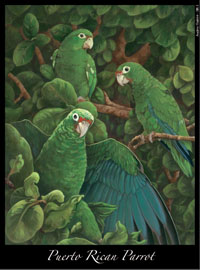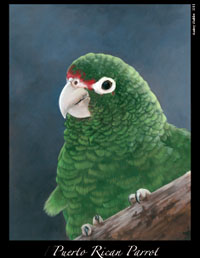The People's Parrot: the First Community-Sponsored Genome - Bio-IT World [fornadablog.blogspot.com]
Question by Al: How does Seagates "Adaptive Memory" technology work with used HDs? I am consodering purchasing a used Seagate Momentus XT. I've heard that these drives become faster after a few hours of use, as the HD uses it's "Adaptive Memory technology" to learn your system. Would buying a used drive screw up this break in process? Also, I am not interested in hearing about the cons of buying a used HD. Best answer for How does Seagates "Adaptive Memory" technology work with used HDs?:
Answer by Adrian
That drive simple caches more recently used files in the SSD part of the disk. That is a bit limited in size, but does help from what I read... If you use one program for a while (including gaming), most of the program files will be in SSD cache, giving fast access. That's what makes it fast - reloading the same code over and over. If you do a lot of random stuff all day long, the SSD just keeps getting re-loaded with new stuff, and if it's never read again, you have little speed advantage. With some "smarts" in it, when you read something via disk, that drive should pre-load the next few sectors in case the next request comes along and asks for those (on next read) - that speeds things up. Overall, it is supposed to be faster..... The "learning" is what you use it for, it knows nothing about the previous system or previous programs once you load yours...
More How does Seagates "Adaptive Memory" technology work with used HDs? Topics
Starting out on a high, the financial problems didnt take long to surface. Meanwhile, the 2000s brought us Wikipedia, YouTube, Facebook and Twitter, while Google began its quest to take over the world. Apples iPod and iPhone swept the market, and breathed new life into the Apple brand. But who can forget the financial crises, fraud and incompetence that made headlines throughout the decade? Life savings and homes lost, companies failing and government bailouts became the reality in the 2000s. In this video, www.WatchMojo.com reviews these and more biz and tech milestones from the first decade of the new millennium. 2000s Decade Recap - Business and Technology
[fornadablog.blogspot.com], The People's Parrot: the First Community-Sponsored Genome - Bio-IT World
By Allison ProffittÂ
September 28, 2012 | Researchers in Puerto Rico have taken the concept of public funding for genome research to a new level. Paid for with money raised from art and fashion shows and private donations, scientists and students at the University of Puerto Rico at Mayagüez have sequenced the genome of the critically endangered Puerto Rican parrot (Amazona vittata)â€"and maybe introduced a new model for genome research.  Â
The group’s results were published today in the international open-access journal GigaScience.  Â
Rare BirdÂ
    |
| Painting by Audrey Guiblet  |
The critically endangered Puerto Rican parrot is the last remaining native parrot in US territory. By the mid-1970’s, only 16 individuals had survived the destruction of the species’ habitat. The low numbers resulted in very little diversity, so breeders sought a way to indentify individual birds for their breeding programs. Â
The need aligned with a University of Puerto Rico-Mayagüez (UPR-M) biology professor’s desire to contribute a Caribbean species to the Genome10K project. But the cost for sequencing was far too high.  Â
“In 2010 this genome would have cost us close to $ 100K. Asking for that much money would take a long time, and the funding for science seemed to be decreasing,†says Taras Oleksyk, the project’s organizer and lead author on the paper. “However, early in 2011 we noticed how quickly the prices were falling. When the projected price went down to $ 10,000 we decided not to go the conventional route of submitting grants and to try to try raise money on our own.â€Â  Â
The timingâ€"and the teamâ€"were serendipitous. One of Oleksyk’s graduate students was hosting his visiting sister, who happened to be an artist.  Â
“She asked if she could do anything to help our project. I asked her to paint a parrot. Her pictures were so good, I thought we could do an art show, sell some paintings and use the money to sequence the genome.â€Â Â
Three art sales, a fashion show, and a host of small and large donations later, and UPR-M has published 29x coverage of 76% of the genome. The project has its own Facebook page, of course.  Â
People-Sponsored Genome Â
Oleksyk and the other authors estimate the parrot’s genome size as ~1.58 Gbp, about half that of the human. The sequencing was done on Illumina HiSeq instruments. Assembly and annotation of the genome were carried out as part of the undergraduate education program at the university. Â
“I think one of the most important things here is that in the process we involved many young researchers in the creative process of building a project from ground up. We had artists, scientists, fashion designers, community activists, all galvanized by a parrot genome project,†says Oleksyk.  Â
“We got undergraduate students involved in learning about next generation sequencing, assembly and annotation. We convinced our community that they could contribute to the development of local science, and our science can contribute to better understanding of the island's beloved species that needs help to come back from the brink of extinction.â€Â Â
Community Effort Â
 Â Â |
| Painting by Audrey Guiblet  |
This funding model and student participation represent important milestones in genomic research, says Steven J. O’Brien of St Petersburg State University in a GigaScience accompanying commentary.  Â
And the model will apply to more than just rare birds. “With tens of thousands of new species genomes likely to be sequenced in the next few years, and a shortage of qualified bioinformaticians and researchers able to assemble and make sense of this data, this project shows one way that young scientists and students can be harnessed and trained to deal with it,†said Scott Edmunds, GigaScience editor. He continues: Now, small institutions can contribute to a field previously considered the domain of large sequencing centers. Â
Oleksyk and his team are far from done. “I think we live in the era of the Great Genome Discoveryâ€"there are thousands of species out there, and it will literally take a village to unravel them all. So we wanted to be part of the process and bring forth the genome of a species closest to our home and our hearts.â€Â Â
He is collaborating with a few small colleges to help them plan genome projects of their own, and is working on developing community annotation, “so we can get students from everywhere involved in the process.â€Â  Â
At UPR-M, Oleksyk’s lab is expanding beyond the Puerto Rican parrot. “We are working now on a project idea called ‘Parrots of the Caribbean’ to sequence all the parrots for the Greater and Lesser Antilles using our parrot as the reference. We will need a lot more money for that, but who knows, maybe Disney would be interested in the name?â€Â Â
In case Disney doesn’t come through with a check, Oleksyk and his students have other ideas as well. “We are collaborating with a local beer company that will make a beer that will be named after and promote our project. My students and I are also putting together a FundAGeek page so we can use the resources of internet.â€Â  Â
And of course parrot portraits are still available. “For a $ 25 donation to the project, we will mail one to you or to anyone else who wants to help!â€Â  Â
All data from this project are available in the GigaScience database, GigaDB, in a citable format, and are available as raw reads in the ENA (Accession # PRJEB225) and as scaffolds with assembly parameters in GenBank (Accession # PRJNA171587).  Â
Find More The People's Parrot: the First Community-Sponsored Genome - Bio-IT World Topics
HAARP Technology HAARP Technology




0 comments:
Post a Comment